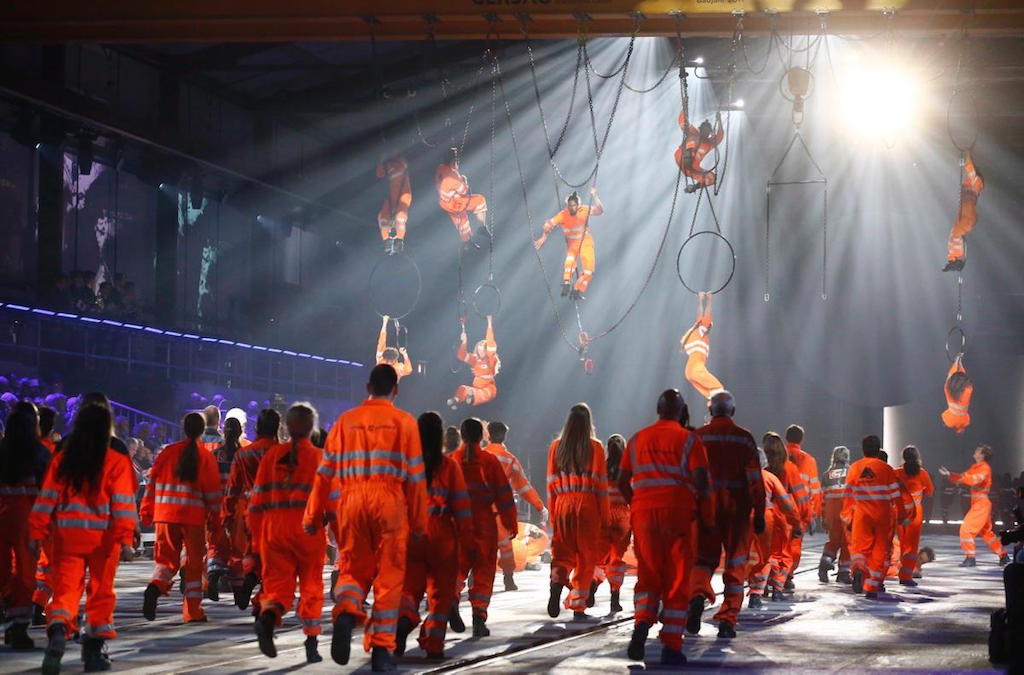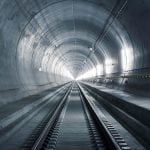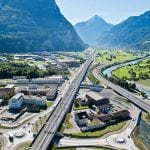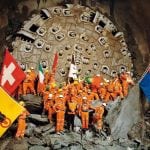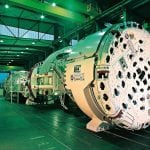Skift Take
Travelers can now travel by train from Germany to Italy through the heart of the Alps in less than three hours.
- The opening ceremony of Gotthard Base Tunnel, June 1, 2016.
- Gotthard Base Tunnel is 35 miles long.
- Gotthard Base Tunnel took five years to complete after boring through the mountain.
- The Gotthard Pass.
- First train passes through the world’s longest tunnel.
- Miners celebrate tunnel clearance in 2011.
- The earth boring machines that dug the tunnel are 450-feet long.
Switzerland opened the world’s longest train tunnel this month cutting travel time between southern Germany and northern Italy by one hour.
The opening of the 35-mile Gotthard Base Tunnel, running north/south between Lucerne and Lugano, supersedes the world’s previous longest tunnel connecting Honshu and Hokkaido in Japan by two miles.
A new train tunnel in Switzerland represents much more than a new piece of transportation infrastructure. It celebrates the very core of the Swiss identity and the country’s history as a neutral nation flanked by France, Germany, Italy, Austria and Lichtenstein.
The factors behind Switzerland’s famous neutrality are many, but a big one is its position on top of the European Alps and the lack of easily navigable terrain at the center of so many major European powers throughout the 20th century.
Especially during World War II and Hitler’s conquest of the continent, Switzerland posed an unattractive target for the Nazi regime due to the country’s imposing landscape. Understanding that, and wanting to make it more unattractive to invasion, the Swiss built explosives into many of its strategic tunnels, bridges, and roads to dissuade German’s high command from attacking.
On a side note, as Switzerland’s reputation as a neutral and highly defensible region grew during the early 1900s, that was the catalyst for positioning the country as a safe haven for banking, and the development of the notorious Swiss bank account.
To enhance its neutrality during wartime, the Swiss provided regional train services to the French via Geneva, the Germans through Zurich, and the Italians coming north from Milan. Because many of the rail tracks were single lines back then, where trains coming in opposite directions had to pull off to let each other pass, that required precise time keeping.
Meaning, Swiss train travel also elevated Swiss watchmaking to its unprecedented heights during the first half of the 20th century.
Today, the Swiss are the undisputed leaders in rail transportation logistics and mobility, which is a significant point of pride for the country that prioritizes public transit and the health of the environment. The Gotthard Base Tunnel first won public support during a 1992 referendum. Construction started in 1996, and the series of enormous 450-foot boring machines finally broke through the mountain in 2011.
The first trains officially passed through the new tunnel during an opening ceremony on June 1, 2016, attended by the heads of state from Germany, France and Italy. It was one of the few times anyone could watch elaborate performances by acrobats wearing mining uniforms swinging from the rafters of an industrial building.
Travel time between the Zurich and Lugano on the northern and southern Swiss borders is now only two hours and 41 minutes, meaning you can now leave your hotel on Lake Zurich after breakfast and make it to Lake Como for lunch without breaking a sweat.
A total of 260 freight trains and 65 passenger trains are scheduled to pass through Gotthard Base Tunnel daily. Total project cost was US $12 billion, roughly the same price tag as the 2012 London Summer Olympics.
The Daily Newsletter
Our daily coverage of the global travel industry. Written by editors and analysts from across Skift’s brands.
Have a confidential tip for Skift? Get in touch
Tags: switzerland
